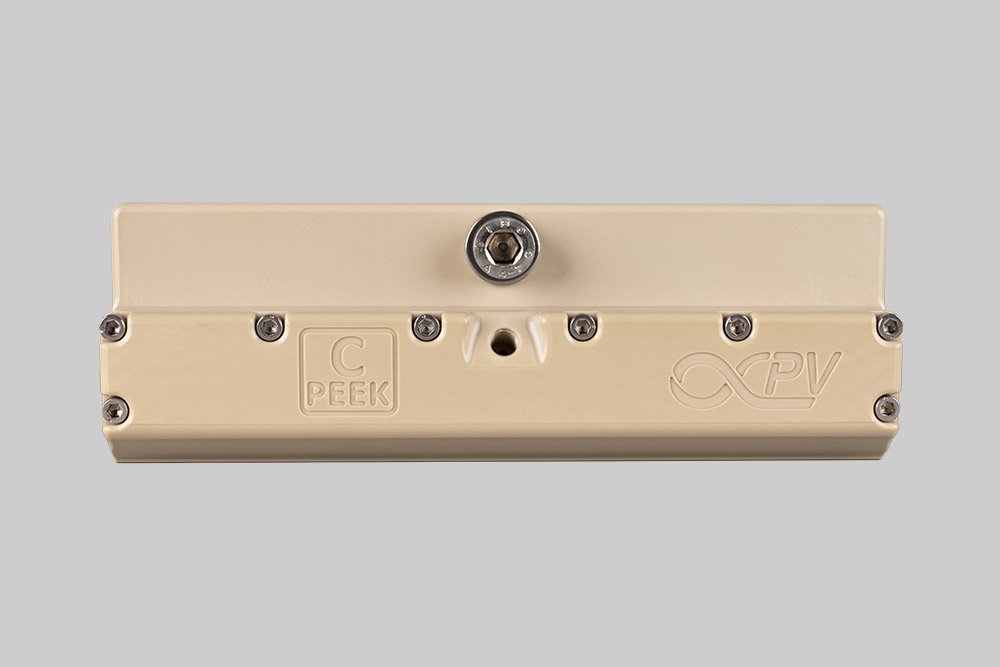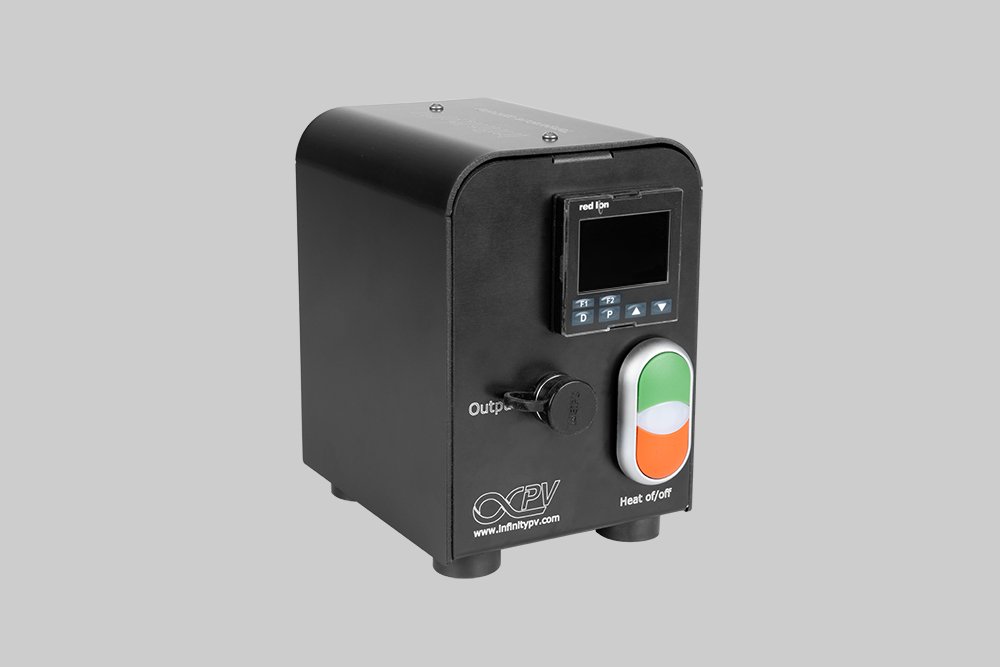How to Select the Right Slot-Die Head for Your Coating Application
A PEEK slot-die head is preferable to stainless steel slot-die head when working with highly corrosive materials, where chemical resistance and non-conductivity are essential.
Selecting the appropriate slot-die head is crucial for optimizing the performance of your coating processes in various applications. Slot-die coating is a precision technique for preparing a thin uniform film of a desired material and is used in industries like electronics, batteries, and solar cells. Different slot-die heads have different advantages/disadvantages and the choice of slot-die head can significantly impact the efficiency, quality, and cost-effectiveness of your production. This guide will help you understand the factors to consider when choosing the right slot-die head based on your application needs, material properties, and other critical parameters.
1. Understand Your Slot-die Coating Application and Ink Properties
The first step in selecting a slot-die head is to clearly define your coating application and the types of inks needed to be coated in order to prepare this. Different applications have unique requirements in terms of film thickness, coating uniformity, and substrate type. Each application may have specific demands for the slot-die head, so understanding these needs will guide your selection process.
The properties of the material to be coated are critical in choosing the right slot-die head. Consider the following:
Viscosity: Slot-die heads are designed to handle different viscosities. Low-viscosity materials require heads that can handle fine, precise applications, while higher viscosities could benefit from having rounded corners within the die to reduce pressure drop and smooth surface finish to reduce friction.
Corrosiveness: If you’re working with corrosive materials, ensure that the slot-die head is made from compatible materials, like PEEK, SS316 or Titanium.
Particle Size: For slurries or inks with particulate matter, choose a slot-die head that is design to prevent clogging (example with increased slot die lip gap and/or inlet port) or use a slurry coater.
Slot-die head mounted on a Laboratory Roll-to-Roll Coater.
2. Consider Slot-die Coating Width
While it is possible to slot-die coat a narrow stripe with a wide slot-die head, the amount of material needed to start the coating process (the dead volume) can become greater than the amount of material coated. If the material is expensive or difficult to source, then using slot-die heads that match the desired coating width can be essential not to waste material.
3. Choose the Appropriate Slot-Die Coating Head Material
The material of the slot-die head is another critical factor that impacts both performance and longevity, especially under varying chemical and environmental conditions. Selecting the right material for the slot-die head ensures that it will perform reliably under specific conditions, reducing the risk of corrosion, wear, and other forms of degradation that can compromise the quality of the coating process.
Some materials applied for slot-die heads are listed below:
Stainless Steel (M315): For most common coating tasks, a stainless steel slot-die head made from M315 provides a cost-effective solution. This material offers good corrosion resistance, longer tool life, and makes manufacturing and precision surface grinding more economical. Steel is heavy and for larger slot-die heads handlining of larger weights should be considered.
Stainless Steel (316L): When better corrosion, mechanical, and thermal resistance is needed, 316L stainless steel is a superior option. Although more difficult to machine and higher in density, it excels in demanding environments where robustness is critical. Steel is heavy and for larger slot-die heads handlining of larger weights should be considered.
Titanium (Grade 2): For extremely acidic or oxidizing environments, grade 2 titanium slot-die heads are ideal. They offer excellent corrosion resistance, mechanical robustness, making them suitable for harsh chemical conditions. Titanium is considerably lighter than steel making larger titanium slot-die heads easier to handle.
PEEK: In strongly reducing or very basic environments, PEEK slot-die heads are preferred. These heads are extremely lightweight and corrosion-resistant, though they are more prone to mechanical wear compared to metals like titanium. PEEK slot-die heads are extremely light compared to their metal counterparts.
A heated slot-die head mount may offers limited temperature control and uneven heat distribution.
Direct slot-die heating offers precise temperature control and uniform heat distribution.
4. Non-Heated vs. Heated Slot-die Heads
When selecting a slot-die head for your coating process, deciding between a heated or non-heated option is crucial. This choice depends on your material properties, desired coating quality, and specific production requirements.
Non-Heated Slot-Die Heads
Simplicity and Cost-Effectiveness: Easy to use and maintain, non-heated heads are ideal for materials with stable viscosity that don’t need temperature control, such as adhesives and sealants.
Limitations: Viscosity may fluctuate with ambient temperature changes, affecting coating consistency.
Heated Slot-Die Heads
Temperature Control: Essential for materials needing specific temperatures for optimal flow. Heating can be indirect (via a mount) or direct (integrated heating elements).
Heated Mount: In this setup, heat is transferred from the mounting block to the backside of the slot-die head, and subsequently to the material. While this method can heat any compatible slot-die head, it offers limited temperature control and may result in uneven heat distribution. It is most suitable for low-temperature applications.
Direct Heating: Direct heating provides precise temperature control and uniform heat distribution, ensuring consistent viscosity and coating quality. Options include electrical or liquid-based heating systems, and the design can be customized for different applications. However, direct heating requires a slot-die head equipped with heating elements and temperature probes, which increases the overall cost.
A slot-die head temperature controller that is used to heat up a slot-die head.
5. Review Compatibility with Coating Systems
The slot-die head must be compatible with existing coating systems and equipment:
Integration: Ensure the slot-die head can be integrated with current machinery and automation systems.
Maintenance: Choose a head that is easy to clean and maintain, reducing downtime and ensuring consistent performance.
6. Intended Use of Slot-Die Head
In which environment are you going to use the slot-die head?
Research and Development: Development and optimization of procedures and products often requires conducting new experiments where factors link ink composition, coating thickness, coating speed, ink flow, coating area and drying conditions are changed. Sourcing a slot-die head that is designed for each new experiment is for most people out of budget and not within the time frame of conducting the experiment. What is needed is a slot-die head that is versatile and that can be applied for a variety of slot-die coating.
Production: When going into large scale manufacture and knowing all about the processing conditions then it makes sense to design a customized slot-die head. Customized slot-die heads are normally more expensive than standard slot-die heads but when considering the improved processing then it can be a cost-effective choice.
Read our thorough guide to understand how slot-die coating works.
Slot-die Head Selection Check List
Selecting the right slot-die head involves considering various options and decisions. To guide you through this process, we’ve compiled a list of questions. Please review them and answer them as well as you can to ensure that you choose the most suitable product for your needs.
Are you coating at high speed (>2 m min¹) or low speed (< 2 m min⁻¹)?
Is your ink material high viscosity (>100 mPas) or low viscosity (0.6-100 mPas)?
Does your ink exhibit Newtonian, thixotropic or rheopexic behavior?
Do you need to pump ink at high pressure?
Is your ink homogenous or inhomogenous (i.e. it contains particles)?
If it contains particles, are they magnetic?
Is the chemistry of your ink mild (i.e. organic solvents) or extreme
(i.e. strongly corrosive or redox active)?
Is your ink very costly or is it available in volume?
Do you need to coat lines or do you need to apply an even coat over the entire working width?
What coating width do you need (working width)?
Do you have geometrical constraints surrounding your coating platform (i.e. inverted coating or narrow space)?
Do you need to heat or cool your ink during coating?
Do you need constant agitation of your ink to maintain homogeneity?
Do you have a requirement for very high precision?
Is the budget for you application limited?
Do you need a general-purpose multiple use slot-die head or will it be dedicated to one process and only one ink?
By answering these questions, you’ll discover that decisions regarding materials, dead volume, feed ports, connections, lip design, precision, special functions, and more have already been addressed. Generally, our budget-friendly option will meet your requirements, but occasionally, there may be situations where low-cost solutions are not available. If you are in doubt, feel free to contact our experts today.
Read our guide to understand whether slot-die coating or slurry coating is best your needs.
Conclusion - How to Select the Correct Slot-die Head
Selecting the right slot-die head is essential for optimizing your coating processes and achieving the best results for your specific applications. By carefully evaluating factors such as application needs, material properties, film thickness, substrate characteristics, production speed, and budget, you can make an informed decision that enhances efficiency and product quality. Investing in the right slot-die head will not only improve your coating results but also contribute to the overall success of your manufacturing operations. For more information on slot-die heads and how to choose the best one for your needs, contact our experts today.









